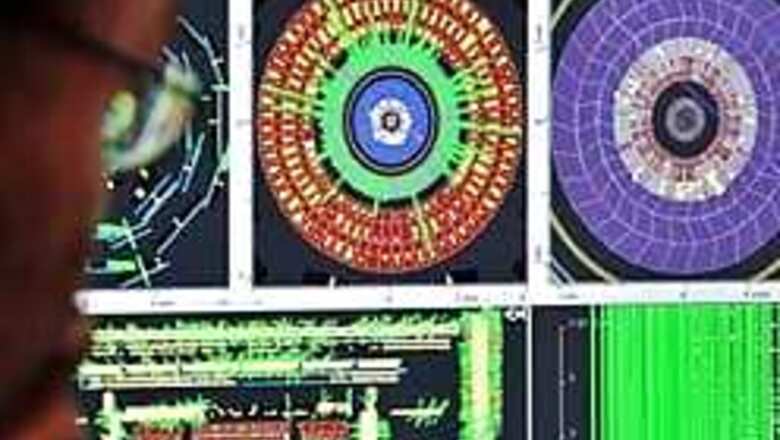
views
Washington: A day after scientists at CERN fired the first beam of protons around the 27-km-long underground circular path of the Large Hadron Collider (LHC) near Geneva on September 10, they say it will take them a month to align the proton beams traveling in opposite directions in the LHC so that proton-proton collisions are generated.
The LHC is the world’s largest and the most powerful particle accelerator.
An estimated 10,000 people from 60 countries have helped design and build the accelerator and its massive particle detectors, including more than 1,700 scientists, engineers, students and technicians from 94 US universities and laboratories.
The scientists also accelerated a second beam of protons through the path in the opposite direction, the goal being head-on collisions of protons that can offer clues to the origin of mass and new forces and particles in the universe.
The second beam made one turn around the LHC.
“After many years of preparation, particle physics is taking a huge step towards understanding whether our theories about the origin of mass are correct and whether there is new physics that can explain dark matter and help us understand dark energy and the origin of the universe,” said Gail Hanson, a distinguished professor of physics, who currently is at CERN.
“Particle physicists from UCR have been involved in the CMS experiment since its beginning, and have been working to construct and commission parts of the detector. They will soon be able to carry out the measurements and make the discoveries that have been dreamed of for so long,” he added.
It will take about a month for scientists to align the proton beams traveling in opposite directions in the LHC so that proton-proton collisions are generated.
The LHC will create almost a billion such collisions per second at an energy of 14 trillion electron volts.
These collisions will take place at four points around its 17-mile ring, where the four main LHC experiments, including CMS, are located.
According to Robert Clare, a professor of physics from the UCR, “We are now on the verge of making hopefully many discoveries over the next years in our understanding of particle physics and how the universe works.”
“For the first time in a long time, we will be breaking new ground. We may discover the Higgs boson; we may discover supersymmetry. We may discover completely new and unexpected phenomena, which would be by far the most exciting prospect,” he added.













Comments
0 comment